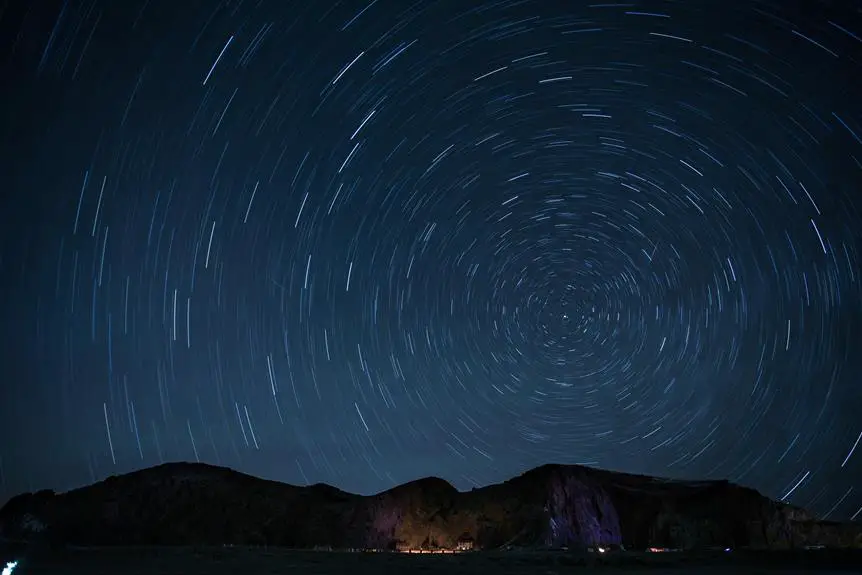As you paint with light and shadow, vignetting becomes the subtle brushstroke that can transform your landscape images into masterpieces. When used creatively, this technique allows you to emphasize your subject, casting it as the undeniable hero of your composition.
You can also weave an atmospheric mood that whispers tales of mystery and intrigue, inviting viewers to lose themselves in the scene. By directing the visual flow, you guide the eye effortlessly across the frame, ensuring that every element plays its part in your visual symphony.
And when it's a matter of balance, vignetting can be the keystone that harmonizes the disparate elements within your canvas. Uncover how these four strategies can elevate your landscape photography to new heights, making your images not just seen, but felt.
Table of Contents
ToggleEmphasizing the Subject
Vignetting can draw the viewer's eye directly to the central subject of your landscape photo, ensuring it doesn't get lost in the surrounding scenery. Use vignetting to your advantage; it's a powerful tool to control the focus of your audience.
You're in charge of the narrative your image tells. By subtly darkening the edges, you create a natural frame that guides attention to that mountain peak, tree, or river you've decided is the star of your shot.
It's not just about what you capture, but how you present it. Think of vignetting as your spotlight – it's there to enhance, not to overpower.
Enhancing Atmospheric Mood
Beyond focusing on the central subject, you can also use vignetting to imbue your landscape images with a deeper sense of atmosphere and mood. By subtly darkening the corners, you draw the viewer's attention not just to the subject, but to the environment's overall ambiance. This technique is particularly effective during the golden hour or when capturing scenes with mist or fog, enhancing the ethereal quality of the light.
Imagine a photograph of a lone tree in the mist. By applying a soft vignette, you'll add a touch of mystery and isolation, compelling the viewer to feel the chill in the air and the quiet of the scene. It's about guiding the viewer's emotions, steering them towards a certain mood without them being fully aware of the manipulation.
In stormy weather, a stronger vignette can dramatize the brooding sky and the land's contours, creating a sense of impending drama. You're in control, deciding how much shadow to cast and where, to craft the story your image tells.
Directing Visual Flow
While enhancing the mood of your landscape images, you can also utilize vignetting to subtly direct the viewer's eyes through the scene, creating a visual path that emphasizes the composition's flow. By strategically darkening corners, you draw attention to specific areas, guiding the gaze like a map through the visual landscape. Here's how you can achieve this:
| Technique | Effect on Visual Flow |
|---|---|
| Gradual Vignette | Guides the eye gently towards the center of interest |
| Elliptical Vignette | Focuses on an off-center subject |
| Asymmetrical Vignette | Leads the eye along a dynamic, uneven path |
| Feathered Edge | Softens the transition for a natural progression |
| Color Tinted Vignette | Adds mood and directs focus with subtle hues |
For instance, an elliptical vignette can highlight a winding river or a mountain range that doesn't sit at the center of your frame. Remember, it's about control – you're not merely darkening edges for the sake of it, but to create a compelling narrative within the landscape. As you apply these techniques, maintain balance; the vignette should complement, not overpower, the natural beauty of the scene.
Balancing Composition Elements
- Highlight Key Elements
- Darken corners to focus on the central subject
- Soften edges to reduce distractions, leading to tranquility
- Emphasize the main features, like a mountain peak or a lone tree
Incorporating vignettes into your landscape photography can harmonize the visual elements, ensuring none overpower the scene but instead contribute to a cohesive whole. Vignetting allows you to balance the composition by subtly darkening the edges of your image. This technique draws the viewer's eye toward the center or focal points, creating a more controlled and intentional frame.
Here's how you can use vignetting to balance composition and evoke emotion.
Conclusion
You've tapped into the subtle art of vignetting to elevate your landscape photography. By skillfully emphasizing your subject, you naturally draw the viewer's attention to the focal point of your image. The strategic use of a moody vignette can indeed add depth and emotion, rendering your scenes with a captivating atmosphere. You've mastered the art of directing the viewer's gaze, creating a visual journey through your composition with ease. Additionally, you've found a way to achieve balance within your frame, crafting harmonious visuals that please the eye.
However, it's worth considering a contrarian viewpoint: some argue that vignetting can sometimes be overused, potentially giving images an artificial or dated look. What's your take on this? Have you found scenarios where vignetting detracts from the natural beauty of a landscape rather than enhances it?
We'd love to hear your thoughts and experiences. Please share your insights in the comments below and let's discuss the nuanced role of vignetting in landscape photography.
